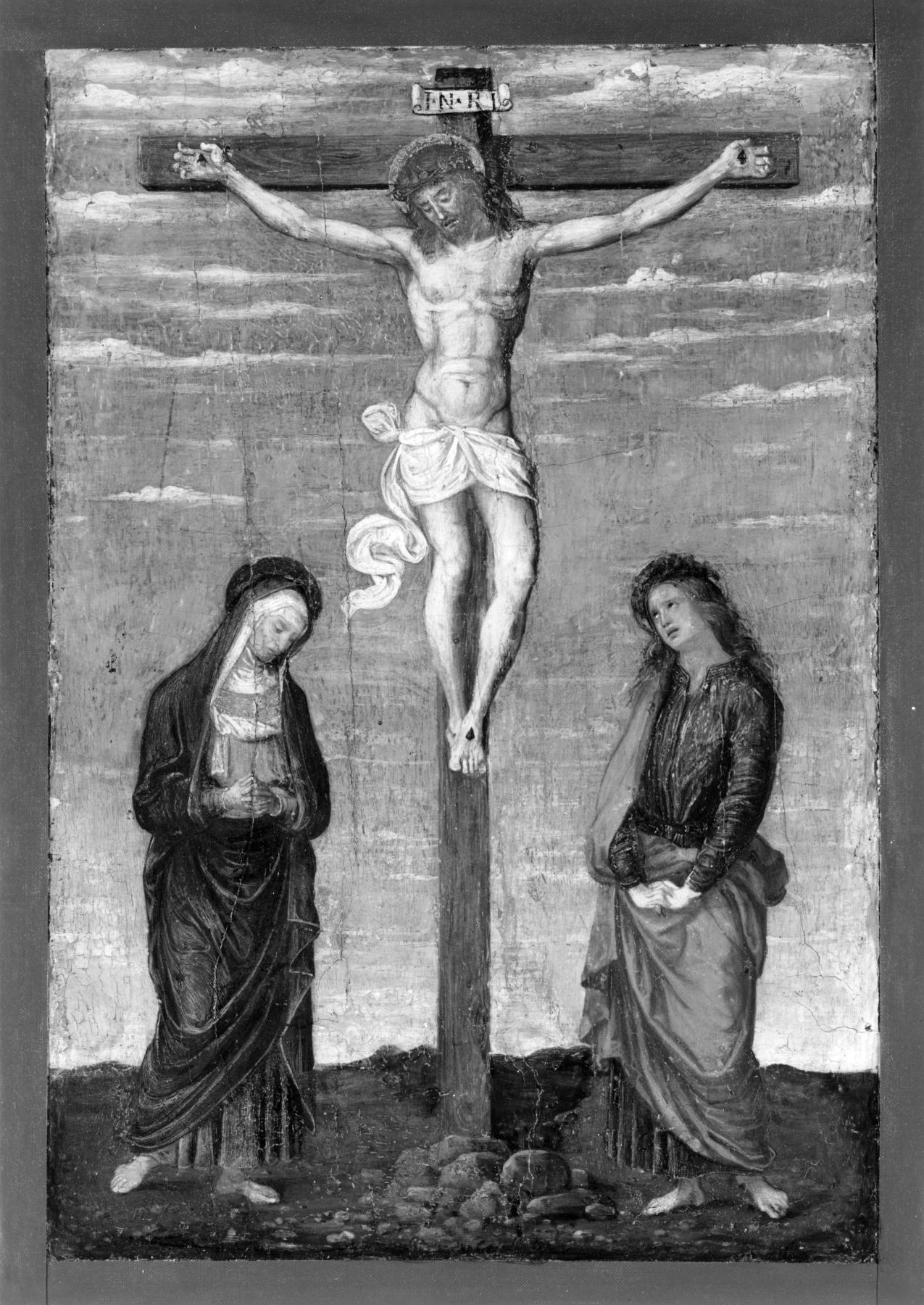The Crucifixion
(Renaissance Europe )
Against a pale blue sky streaked with clouds, the dead Christ hangs on the cross between the mourning Virgin Mary and the apostle John. The painting's small size and meticulous execution suggests it was intended to be viewed from close up so that its minutely-described details, such as the pebbles in the foreground or the wood grain of the cross, could be carefully appreciated. That the painting was executed on a piece of parchment (instead of a wood panel) may indicate that it was initially a page of a manuscript that was later cut out and framed as an independent panel painting. The composition is closely based on this painting by Pietro Perugino, one of the most famous painters in Italy during the Renaissance, now at the National Gallery of Art in Washington, D.C.
Inscription
Provenance
Provenance (from the French provenir, 'to come from/forth') is the chronology of the ownership, custody, or location of a historical object. Learn more about provenance at the Walters.
Don Marcello Massarenti Collection, Rome [date and mode of acquisition unknown] [1897 catalogue: no. 134, as Perugino]; Henry Walters, Baltimore, 1902, by purchase; Walters Art Museum, 1931, by bequest.
Conservation
| Date | Description | Narrative |
|---|---|---|
| 3/13/1981 | Examination | examined for condition |
Geographies
Italy, Umbria (Place of Origin)
Measurements
Painted surface H: 10 7/8 x W: 7 5/16 in. (27.6 x 18.5 cm); Composite wood support H: 13 5/16 x W: 9 3/4 x Approx. D: 3/8 in. (33.8 x 24.7 x 1 cm)
Credit Line
Acquired by Henry Walters with the Massarenti Collection, 1902
Location in Museum
Not on view
Accession Number
In libraries, galleries, museums, and archives, an accession number is a unique identifier assigned to each object in the collection.
In libraries, galleries, museums, and archives, an accession number is a unique identifier assigned to each object in the collection.
37.1174


